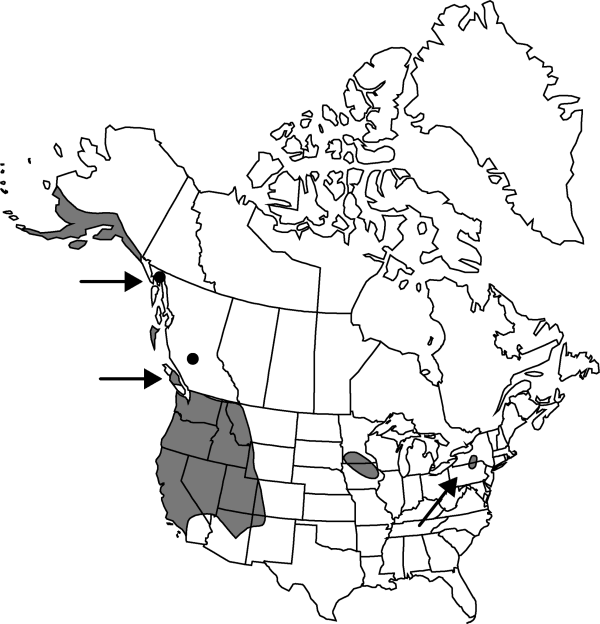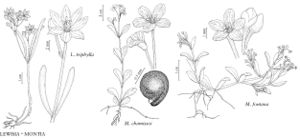Montia chamissoi
Fl. Francisc., 180. 1891.
Common names: Chamisso’s montia
IllustratedEndemic
Basionym: Claytonia chamissoi Ledebour ex Sprengel Syst. Veg. 1: 790. 1824
Synonyms: Crunocallis chamissoi (Ledebour ex Sprengel) Rydberg
Revision as of 23:21, 27 May 2020 by imported>Volume Importer
Plants perennial, rhizomatous and stoloniferous, usually bulbiferous; rhizomes and stolons slender. Stems erect, aerial portion 2–32 cm, subterranean portion 1–15 cm. Leaves opposite, petiolate; blade oblanceolate to rhombic or ovate, short, 2–60 × 1–20 mm. Inflorescences ebracteate. Flowers 2–10, often replaced by bulbils; sepals 2–4 mm; petals 5, white or pink, 2–4 mm; stamens 5, anther pink or lavender. Seeds 1–1.5 mm, tuberculate; elaiosome present. 2n = 22.
Phenology: Flowering May–Aug.
Habitat: Wetlands, riverbanks and streamsides from low to high elevations of coastal valleys and mountains
Elevation: 500-3700 m
Distribution

B.C., Alaska, Ariz., Calif., Colo., Idaho, Iowa, Minn., Mont., Nev., N.Mex., N.Y., Oreg., Pa., Utah, Wash., Wyo.
Discussion
A related species, Montia calcicola Standley & Steyermark, occurs in the Guatemalan highlands.
Selected References
None.
Lower Taxa
None.
